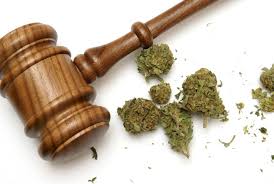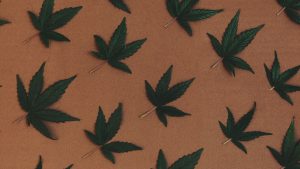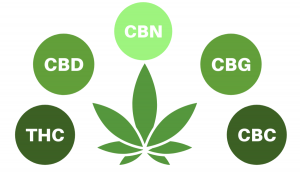Marijuana is the dried stems, leaves, and flowers of the cannabis plant Cannabis. The main active ingredient in Marijuana is the mind-altering chemical delta-9-tetrahydrocannabinol (THC).
The most commonly used illegal drug in the United States is Marijuana. A national survey on drug use from 2018 found that Marijuana was the most commonly used illegal drug in the United States. 1
At the 2018 midterm elections, Marijuana was legalized in 10 states and Washington, DC for recreational use by adults over 21 years old. More than 30 states have laws that allow Marijuana to be used for medical purposes only. Several others only allow oil with low levels of THC. Federal law still makes marijuana illegal.
Also known as There are more than 200 terms used to describe Marijuana. These include pot, herb and weed, grass; hash, Mary Jane; Cannabis, bubble gum, northern light, fruity juice, gangster; Afghani #1; skunk, chronic, and many others.
Drug Class Marijuana can be classified as a depressant but also has stimulant or hallucinogenic properties.
Side effects: Some side effects of Marijuana include impaired memory, altered perceptions, mood swings, mood changes and difficulty thinking. High doses can cause hallucinations, psychosis and delusions.
How to recognize Marijuana
Marijuana appears to be a green-brown, shredded mix of plant material. It can look very different depending on how it’s prepared and packaged.
What does Marijuana do?
Certain nerve cells have receptors in their membranes that bind THC. This triggers a series of cellular reactions, which eventually lead to the marijuana users’ experience. The drug is used to elevate their moods and relax them. People may experience paranoia, hallucinations and euphoria depending on their THC level.
Smoking marijuana is the most popular way to consume it. You can smoke it in a pipe, a pipe, or a boon by rolling it into a joint.
The new trend in marijuana use is to smoke or eat different THC-rich resins from the marijuana plant. You can bake it into cookies, brownies, candy and even make a potent tea out of it.
What experts say
Teens who smoke Marijuana can have problems because of the long-term effects it has on their mental abilities, including learning and memory. A 2012 study showed that teens who started smoking Marijuana as teens had an average loss of eight IQ points. 3
Smoking marijuana is the most popular method of using it. This poses respiratory risks as well as other dangers. 4 Smoking marijuana can increase your risk of chronic coughing, wheezing, and shortness of breath. A 2015 review found that research on the effects of smoking marijuana on cancer risk is mixed. 5
Some evidence suggests that marijuana exposure may make it easier for people to take “harder” drugs. Some evidence suggests that Marijuana may make using “harder” drugs easier. However, the National Institute on Drug Abuse says otherwise. 6
These risks aside, there are still reasons people continue to use Marijuana. A 2016 study found that people reported using Marijuana to 7
- Relax and relieve tension
- Escape from life’s problems
- Boredom is a thing of the past
- Feel happy or euphoric
- Socially, fit in
Uses that are not on the label or recently approved
Marijuana is used for its recreational purposes, but it has also been used medicinally for many years. Although it has not been approved for use by the FDA, Marijuana is legal in many U.S. states.
The use of medical Marijuana for treating symptoms, not the actual condition, is called medical Marijuana. According to 2017 research, Marijuana is more effective for treating symptoms than its condition. 8
Here are some conditions that medical marijuana can be used to treat.
- AIDS
- Alzheimer’s disease
- Cancer
- Crohn’s Disease
- Eating disorders
- Glaucoma
- Cachexia
- Migraines
- Seizures
- Extreme pain
- Severe nausea
- Consistent muscle spasms
- Wasting syndrome
Research on medical Marijuana’s potential benefits is ongoing. As researchers continue to investigate the benefits of medical marijuana, it will be recognized and legalized for use in treating or relieving symptoms.
Medical Marijuana has been legalized in 33 states and Washington, D.C., as of 2019.
Common side effects
Side effects include dry mouth and swelling of the eyelids.
These are short-term risks:
- Paranoia and anxiety
- Memory impairment
- Difficulty in thinking
- Learning difficulties
- Attention and focus are not at the top of my list
- Poor driving skills
Potential long-term risks include:
- Respiratory problems
- Increased risk of infection, particularly in the lungs
- Poor short-term recall
- Cognitive impairment
- Motivational issues
Regular marijuana smokers could also experience the same respiratory problems as tobacco smokers, such as daily cough, phlegm, chronic bronchitis symptoms, and frequent chest infections. Continued smoking marijuana may cause abnormal functioning of the lung tissue that has been damaged or destroyed by marijuana smoke. 8
Some of these risks cannot be avoided, but there are ways you can reduce or eliminate some of them if you smoke.
Signs of use
There are many ways to consume Marijuana, but smoking is the most popular. You might notice these signs if you suspect someone is using marijuana recreationally.
- Focus is lacking
- Talkativeness
- Secrecy
- Sleepiness
- Food cravings have increased
- Bloodshot eyes
- Poor time management
- Drug paraphernalia (e.g., pipes, baggies, rolling papers)
Remember that these signs can be caused by many other things or simply variations in your normal behavior. Instead of focusing on a single action, look for patterns and not a series of actions that could be interpreted as evidence of drug use.
Tolerance, dependence, and withdrawal
Regular use of Marijuana can lead to tolerance, according to research. To achieve the same effects, tolerance can be caused by increasing doses of Marijuana or frequent use. Researchers found that regular marijuana use had less noticeable effects than non-regular users. Researchers also discovered that Marijuana’s physiological, behavioral and cognitive effects decrease with repeated exposure. 9
How long does Marijuana stay in your system?
The dose of Marijuana and the frequency of use will affect how long it stays in your body. Urine tests can detect Marijuana for as long as 13 days. However, frequent use could lead to longer detection windows. It is also possible to influence the detection window depending on the type of test used. Although Marijuana can only be detected in blood for a short time, hair follicle testing can detect it for up to 90 days.
Addiction
Today’s Marijuana often has higher levels of THC than it did in the past. This makes it more addictive. Although it is rare, regular marijuana use can lead to mental and physical dependence. According to the Centers for Disease Control, 1 in 10 marijuana users will become addicted.
In 2015, more than 30% of Americans who used Marijuana in the United States suffered from marijuana addiction. 11 Those with a long-standing history of marijuana use are more likely to develop an addiction. 12
If a drug causes someone to compulsively and often uncontrollably crave, seek and use it, it is addictive. This is the criterion for Marijuana.
Withdrawal
People who use Marijuana regularly may feel a craving for the drug and have difficulty quitting. Some people experience withdrawal symptoms from marijuana use, including:
- Difficulty in sleeping
- Drunk cravings
- A decreased appetite
- Anxiety
- Irritability
- Changes in mood
- Headaches
- Sweats and chills
- Depression
These symptoms can be mild or severe. You can manage withdrawal symptoms yourself, but you should consult your doctor if they become more severe or prolonged or if depression symptoms appear.
How to get help
Counseling and psychotherapy are often used to treat marijuana addiction. It is designed to teach people new skills and treat co-occurring mental disorders.
14 These forms of therapy or counseling can be very effective.
- Cognitive-behavioral therapy
- Motivational incentives
- Counseling for individuals or groups
- Family therapy
- Support groups
Although there are no approved medications for marijuana disorder treatment, antidepressants or other medications can treat anxiety and depression symptoms.



